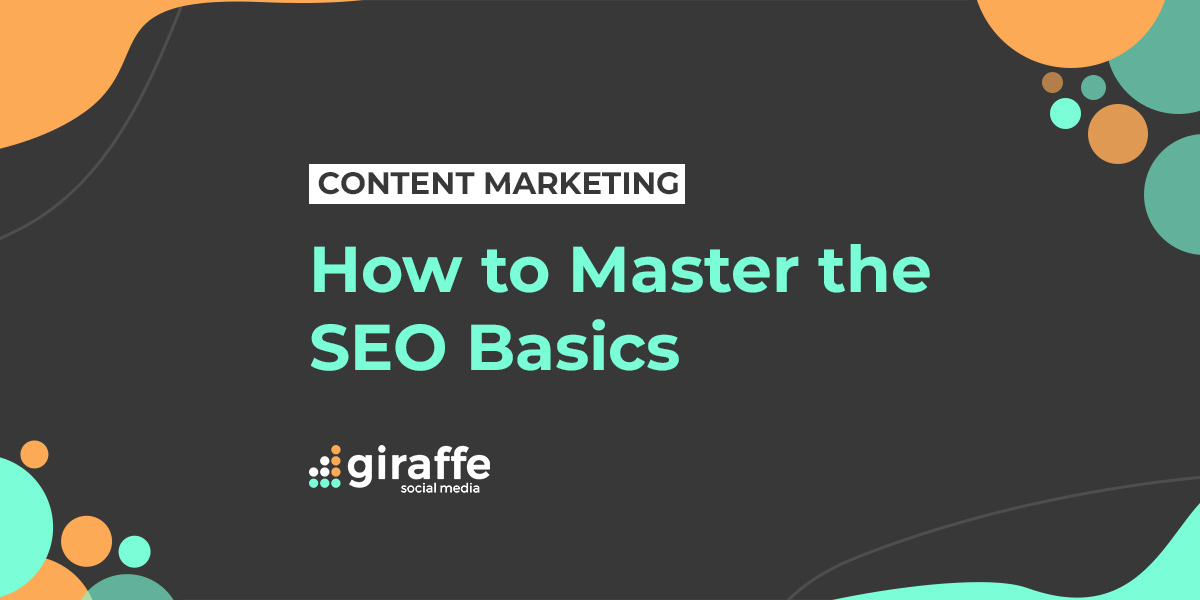If you’re a business owner, making time to focus on your marketing and social media strategy is super important. After all, a good online presence has the power to build your brand, grow your audience and generate sales. It’s not all just about great Tweets and beautiful Instagram imagery, though – one of the key skills to master is the SEO basics.
If you’ve never delved into the world of digital marketing, the term ‘SEO’ probably won’t mean much to you. But we’ve put together a super simple guide that will help you crack it in no time!
What is SEO?
SEO stands for ‘search engine optimization’ and is the art of increasing organic (unpaid) web traffic from search engines with specific techniques. It’s an important area to invest time in, simply because search engines are one of the biggest sources of traffic aside from paid advertising. So the better your website is performing, the more of those lovely visitors you’ll get!
A quick Google search of SEO topics produces pages and pages of results, packed with confusing terms and lengthy descriptions. If you’ve got little or no experience with marketing, it can seem completely overwhelming, but before you run for the hills, don’t panic. We’ve collected together our top five favourite tips for you to put in action today, to help you master the SEO basics.
Learn about keywords
Keywords are the nuts and bolts of SEO. They help to improve your search engine ranking, get your content in front of the right audience, and increase the time people spend on your site. Keywords can be either:
Short tail.
These are generally only one word, such as ‘biscuits’. They will obviously get more traffic, but it’s not always meaningful as the keyword is so general.
Long tail
Long tail keywords are longer, more specific phrases, such as ‘bake chocolate chip biscuits’. These keywords tend to get less traffic, but have a greater conversion rate. It’s also far easier to rank for long tail keywords, as there’s less competition from other sites.
It’s important to spend a little time researching keywords – it’s the art of finding out what people are searching for, and then providing them with exactly that! Start by making a list of all the topics related to your business, then delve into those topics with longer keyphrases. You can also head over to Google to find out what people are looking for – or you can harness the power of free SEO tools (hint: we’ll cover that in a bit!).
Once you’ve chosen your keywords, it’s all about distribution. They should appear:
- Once in the title, preferably at the beginning
- In one of the heading tags on the page
- Within the URL – this is often called the ‘slug’
- Once within the meta description
- A few times within the body content; the general rule is no more than five. ‘Keyword stuffing’ is considered spammy, and very bad form!
Add a snippet
A snippet, or meta description, is the small piece of text that appears under the search engine result. It’s a succinct summary of the pages content, and as well as improving your ranking, will also encourage people to click through to your site.
The snippet is limited to 155 characters, so it’s important to keep it brief – anything over that amount will get automatically cut off by the search engine. It’s a great place to include your chosen keyword or phrase, and if you can, a call-to-action.
Include alt-attributes for images
Another one of the SEO basics, alt-tags are super important to your website, for a couple of reasons. Firstly, it’s all about accessibility – any users who might be visually impaired will rely on alt-tags to understand what’s going on with an image.
Secondly, they help search engine crawlers to index the image correctly – so it’s important to accurately describe what the image is actually conveying. This is another prime space to include one of those magical keywords or phrases, but this time you’ve only got 125 characters. So make it count!
Utilise some SEO tools
SEO can be tricky to get to grips with, but luckily there are some great tools around to get you started. Three of our favourites are:
This smart website listens in on Google searches, and records what people are looking for. It uses the data to generate useful phrases and questions related to your chosen keyword. In short, it’s the best place to go for that all-important customer insight!
MOZ is a one-stop shop for all your SEO needs. Their main aim is to make digital marketing, particularly SEO, easy to understand and simple to master. If you’re in the market for it, you can opt for one of their all-in-one packages which will make all of your marketing dreams come true. If you’re aiming to do-it-yourself, they have a huge host of free resources and tools; the domain analysis allows you to check how your website is performing, while the keyword explorer helps with finding those all-important targeted keywords.
We love Yoast here at Giraffe. As well as a website full of tips and tricks, Yoast have produced a range of genius plugins for your WordPress site which analyse your content as you write, letting you know how you’re doing in the SEO department. It checks things such as sentence length, keyphrase density, meta description and text length, and then offers useful tips on how to improve via a traffic-light system.
Watch your sentences
Sentence length is another one of the SEO basics, which is slightly less obvious but just as important. Long, rambling sentences are difficult to read, and Google prefers to rank content which is high-quality and wonderfully readable. In short, if you want to move up in search engine rankings, you need to keep your sentences brief!
The general rule of thumb is that sentences should be around 20-25 words. You can add in a few longer sentences for variety, but they shouldn’t make up over 25% of your article or blog post. This is another situation where the Yoast plugin comes in handy; it will scan your text, then highlight where the long sentences are, allowing you to edit them.





